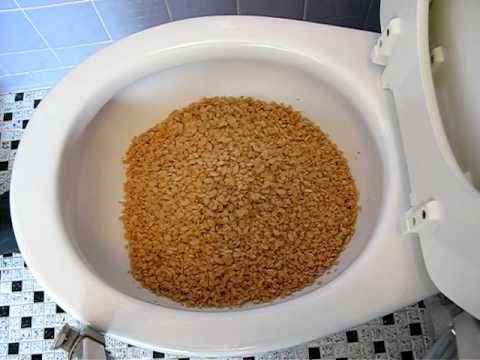Is it Wise to Flush Food Down the Toilet?
Is it Wise to Flush Food Down the Toilet?
Blog Article
Right here down the page yow will discover lots of sound details regarding Is it safe to flush food (especially rice) down the toilet?.

Intro
Many individuals are often confronted with the problem of what to do with food waste, particularly when it comes to leftovers or scraps. One usual inquiry that occurs is whether it's fine to flush food down the bathroom. In this write-up, we'll delve into the reasons why people may take into consideration purging food, the repercussions of doing so, and alternate approaches for appropriate disposal.
Reasons that people could think about flushing food
Absence of understanding
Some individuals might not be aware of the prospective damage brought on by flushing food down the commode. They might wrongly believe that it's a safe practice.
Comfort
Flushing food down the commode may feel like a fast and easy solution to taking care of undesirable scraps, specifically when there's no close-by trash can available.
Negligence
In many cases, people might simply pick to flush food out of large negligence, without taking into consideration the consequences of their activities.
Effects of flushing food down the commode
Environmental effect
Food waste that winds up in rivers can contribute to air pollution and damage aquatic environments. Additionally, the water made use of to purge food can stress water resources.
Plumbing concerns
Purging food can lead to blocked pipelines and drains pipes, creating costly plumbing repair services and troubles.
Types of food that ought to not be flushed
Coarse foods
Foods with fibrous appearances such as celery or corn husks can obtain entangled in pipelines and create clogs.
Starchy foods
Starchy foods like pasta and rice can soak up water and swell, bring about blockages in pipelines.
Oils and fats
Greasy foods like bacon or cooking oils must never be flushed down the bathroom as they can strengthen and cause obstructions.
Appropriate disposal approaches for food waste
Making use of a waste disposal unit
For homes equipped with garbage disposals, food scraps can be ground up and purged with the pipes system. Nonetheless, not all foods are suitable for disposal in this manner.
Recycling
Certain food product packaging materials can be recycled, minimizing waste and minimizing environmental effect.
Composting
Composting is an environment-friendly method to deal with food waste. Organic materials can be composted and utilized to improve dirt for gardening.
The importance of proper waste administration
Lowering ecological damage
Correct waste management practices, such as composting and recycling, assistance minimize contamination and maintain natural resources for future generations.
Shielding plumbing systems
By preventing the technique of flushing food down the toilet, house owners can protect against costly pipes repairs and maintain the integrity of their pipes systems.
Conclusion
Finally, while it may be appealing to flush food down the bathroom for ease, it is necessary to comprehend the possible repercussions of this activity. By embracing correct waste monitoring practices and taking care of food waste sensibly, individuals can contribute to healthier plumbing systems and a cleaner environment for all.
FLUSH FOOD DOWN THE TOILET?
FLUSHING FOOD CAN CAUSE BLOCKED DRAINS IN YOUR HOME
All of the plumbing fixtures in your home are connected to the same sewer pipe outside of your home. This outdoor sewer pipe is responsible for transporting all the wastewater from your home to the Council sewer mains. Even small pieces of food that go down the kitchen sink can cause problems for your sewer. It should therefore be obvious that flushing larger bits of food, such as meat, risks a clog in either the toilet itself or the sewer pipes. Flushing greasy food is even more problematic because oil coagulates when it cools, coating the interior lining of your pipes.
THE TOILET IS NOT A BIN
Food isn’t the only thing that people shouldn’t be flushing down the toilet. People use the toilet to dispose of all kinds of things such as tampons, makeup wipes, dental floss, kitty litter and even underwear. Water goes to great lengths to educate residents about the high costs and stress placed on wastewater treatment systems simply from people flushing the wrong stuff down the toilet. It costs taxpayers millions of dollars each year, and homeowners thousands in blocked drain repairs.
FLUSHING FOOD IS A WASTE OF WATER
Flushing food is a waste of our most precious resource - water. In June this year Level 1 water restrictions were introduced to protect water supply from drought conditions. Much of New South Wales continues to be affected by prolonged drought with recent figures revealing up to 97 per cent of the state remains in drought. Depending on whether you have a single or dual flush toilet, every single flush uses between five and 11 litres of water. In the current climate this is a huge amount of water to be wasting on flushing food that should be placed in the bin (or better yet, the compost).
https://www.jabplumbingsolutions.com.au/blog/can-you-flush-food-down-the-toilet

We had been introduced to that write-up about from an associate on another web page. Loved our content? Please share it. Help other people locate it. Thanks so much for going through it.
Schedule Free Estimate Report this page